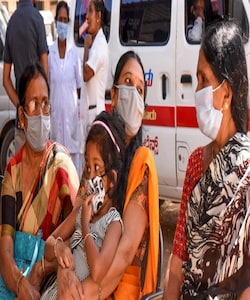KalimNews and Agencies, June 7, 2025, Kolkata : India has reported 163 cases of a newly emerging COVID-19 variant, XFG, according to the latest data from the Indian SARS-CoV-2 Genomics Consortium (INSACOG). The recombinant XFG variant, which has been rapidly spreading globally, was first detected in Canada and has since raised concerns among health experts due to its potential mutations in the spike protein. INSACOG’s report reveals that Maharashtra has the highest number of detected cases, with 89 samples, followed by Tamil Nadu (16), Kerala (15), Gujarat (11), and Andhra Pradesh, Madhya Pradesh, and West Bengal, each with six cases.
While 159 cases were recorded in May, the variant was first identified in April with two samples, and two additional cases have been detected in June. As India’s active COVID-19 case count surpassed 6,000, with 769 new cases reported in the last 48 hours, the health ministry’s data signals the variant’s increasing presence in the country.
The XFG variant is classified as a recombinant sub-lineage, meaning it likely emerged through genetic recombination between two previously circulating Omicron sub-variants. Recombinant variants are not uncommon in the course of the pandemic, with similar strains such as XBB, XE, and XBF also emerging from the Omicron lineage. However, experts caution that the danger posed by recombinant variants is not determined solely by their origin but by factors like transmissibility and immune evasion.
The XFG variant, despite the mutations it carries, has not been classified as a “Variant of Concern” (VOC) or “Variant of Interest” (VOI) by the World Health Organization (WHO) or India’s Ministry of Health. At present, there is no evidence suggesting that XFG is causing major outbreaks, increased hospitalizations, or vaccine resistance. The mutation profile of XFG includes key spike protein mutations such as His445Arg, Asn487Asp, Gln493Glu, and Thr572Ile, which could potentially impact its ability to infect cells, evade immunity, and spread faster.
As of now, there is no indication that XFG causes more severe illness or a higher mortality rate compared to other Omicron sub-variants. Similar to most Omicron-related strains, it appears to cause mild upper respiratory symptoms in vaccinated or previously infected individuals. Despite these findings, health officials remain vigilant, as the virus’s evolution is unpredictable. New variants with immune-evasive capabilities or those with mutations that improve viral binding to human cells could spark new waves of infection if not closely monitored.
Indian virologists are particularly focused on the key spike mutations present in XFG, which could influence its interaction with the human immune system. While some mutations may reduce the virus’s ability to bind to human cells, others may enhance its immune evasion, raising concerns over its potential to bypass the body’s natural defenses or vaccine-induced immunity.
Regarding vaccine efficacy, there is no conclusive evidence yet indicating that vaccines are less effective against XFG. However, as scientists continue to study its characteristics, public health officials are urging the public to stay cautious, get vaccinated, and follow preventive measures to mitigate the risk of further spread.
India’s ongoing monitoring of this new variant highlights the global effort to understand and contain the virus, while balancing the urgent need for more widespread vaccinations and public health preparedness.








